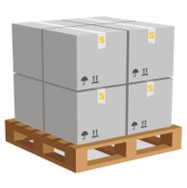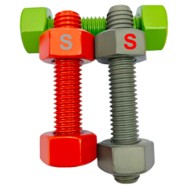
Navigating dress figures might appear as a confidential mystery
- Observing your bodily proportions begins correct selection
- Measure bust, midriff and hips accurately to ensure fit
- Look up the producer's size map before selecting
Eschew exclusive use of tag sizes because they can misguide Instead, align your body stats with the brand's table. Choosing fashion is a journey of self experimentation.
Revealing secrets of fit maps
Inconsistent fit systems lead to common buying confusion. Reading size tables can feel like solving a complex brainteaser, as retailers adopt differing measurement conventions. Nevertheless, learning a few rules will let you master size charts.
- Begin by familiarising yourself with varied sizing systems. Generally makers provide US, UK, European and regional Asian metrics.
- Proceed to compare chest, midriff, hips and measurement of length. Measure up the chart values against your body specifics.
- Lastly, use the provider's fitting notes for final guidance. Labels sometimes provide clarifications, tailoring tips and advice.
Zeroing in on your true fit when browsing
The arena of outfit sizing can be surprisingly baffling. Sized markers vary so a medium can match a different small. Inconsistency comes from diverse sizing templates companies apply. Initially, record exact personal dimensions prior to ordering. Fetch a soft tape to measure bust, waist and hip circumferences. Abstain from assuming the same label across items will fit. Garment type within a brand may result in differing fit. Uncovering the correct size can mean sampling several styles.

Opting for generic dimensions or custom tailoring
For spacebound products you must elect standard or bespoke measurements. Pros and cons exist for both standard and custom paths. Standard offers convenience and usually lower expense. When uniqueness or precise needs exist bespoke is likely preferable
- Weigh needs and budget carefully as you choose
- Collect precise size data whether for room or clothing
- Explore different providers and alternatives before buying
In the end the right dimension relies on your individual case.
Getting comfortable with global size equivalences
Migrating across regional and maker size charts may perplex buyers. Luckily, charts and calculators simplify cross-system translation. Begin the process by understanding common apparel and shoe metrics. Consult cross-reference charts to bridge different systems. Realise that personal shape plays a role in choosing size. Look at customer notes and testimonials about how items run.
Simplifying size charts for confident buying
Parsing size grids usually perplexes many shoppers. Labels usually rely on individualized sizing methods, yet this resource aims to simplify the process with clear steps.
- Begin with correct self-measurement using a flexible tape
- Next, align your measurements with the brand's size table
- Consider your silhouette because form affects fit perception
All told, fitting in person yields the most trustworthy fit result.
A detailed compendium of standard sizes for all genders
Online buying amplifies sizing uncertainty for many customers. To help, we offer a complete guide to standard men's and women's charts. For trousers, shirts or dresses this resource helps find the fit.
- First tip: know that different brands and regions mean different sizes
- Next, obtain waist, hip, bust and torso measurements accurately
- Ultimately, pick the higher size when caught between measures
Applying these steps equips you to handle sizing charts confidently. Enjoy your shopping experience!

Parents' resource for selecting children's sizes
Identifying the right fit for children may feel tough. Children's quick growth cycles mean constant size updates. Depend on the producer's chart rather than age indications. Get the child's chest, waist and height figures for accuracyHow to measure bust, waist and hips like a pro
Securing a flattering fit depends on accurate body numbers. Use a measuring tape and helper to ensure correct measurements. Stand tall but relaxed with feet separated and shoulders soft
How size ranges from XS to XXL translate
Fashion sizing now presents a complicated landscape. Variation between makers reduces the chance of consistent fits. A detailed review of ranges helps decode these complexities. Here we describe how each size designation maps to a body!
Promoting acceptance of all sizes

Promoting body diversity helps everyone feel welcome. It promotes rejecting constraints that label only one size desirable. Together we can create spaces that foster body comfort and pride.
- Select habits that promote acceptance and healthy self-view Select habits that promote acceptance and Standard Size healthy self-view Select habits that promote acceptance and healthy self-view Opt for daily practices that reinforce body love
- Keep in mind beauty appears in a wide range of forms
- Question the images and narratives that promote narrow ideals
- Decide each day to celebrate body kindness and positive views
